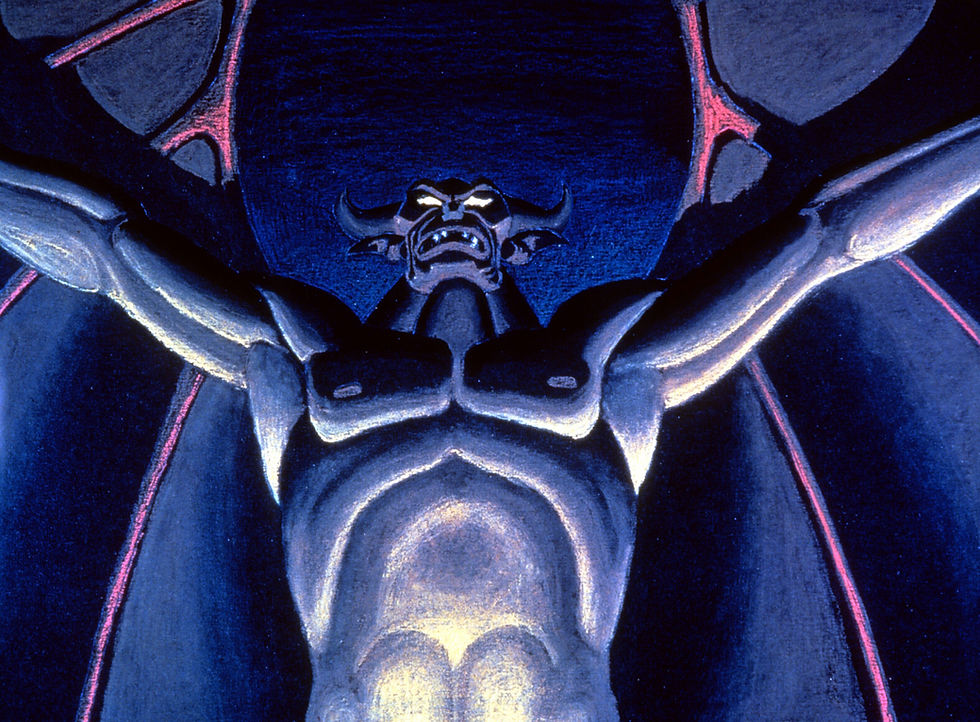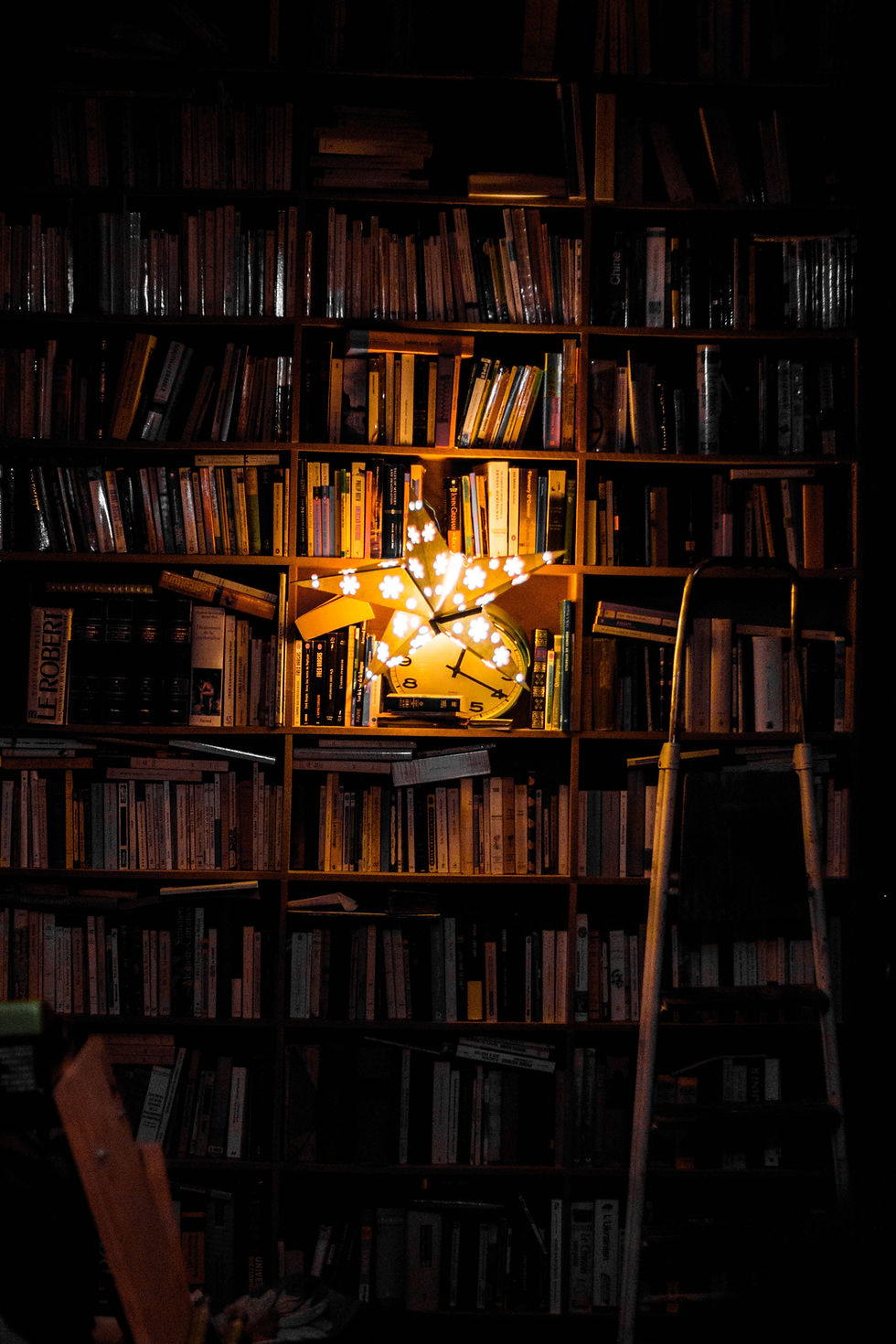How to Celebrate Walpurgis Night: 7 Traditions for Spring's Halloween
- M. Grant Kellermeyer
- Apr 29, 2018
- 6 min read
Updated: Sep 3, 2025
It's a chilly night of bright fires, witches' Sabbaths, widely held superstitions, and roaming demon dogs. As cool winds whip mostly-bare trees back and forth, the night sky is thought to fill with cackling witches and wizards, devils and demons, ghosts and goblins, and specters and skeletons. And you're telling me it takes place in the SPRING?
You bet: on April 30th, approximately six months after Halloween, people all over the world celebrate spring's own spooky holiday -- Walpurgis Night. It is called Walpurgisnacht in German-speaking cultures, May Day Eve in English-speaking cultures, and heralds the May 1st celebration of Beltane in Gaelic and Pagan cultures. April 30th is even the dominant "spooky holiday" in most Central European and Scandinavian countries, where it has more cultural currency than October 31st.

The holiday is said to be Satan's last hurrah before the dawn of May Day (or Beltane), which ushers in the light, warmth, and life that evil spirits seem to revile. All the black magic covens across the world are said to hold wild orgies in the woods or on high hills, with the biggest, most raucous celebration taking place on Germany's gloomy Brocken, the peak of the Harz Mountains, where Satan himself always makes a special appearance. The Powers of Darkness go out with a bang just as they began their six-month reign on October 31st: by taking advantage of the thin veil between the living and the dead and stirring up mischief.
If you hope to make it through the evening without being tormented by dreams of witches, goblins, and the undead, here are a few suggestions from celebrants around the world.
7. BE WITH PEOPLE, HAVE FUN, AND GET LOUD

Walpurgis Night is all about community: about making a loud, wild noise to scare off humanity's ancient adversaries, so try to get some friends together and make some mischief of your own. Have a great time: prank each other (although it is traditional to prank strangers, that’s not quite in the spirit of human fellowship, is it?), make jokes, play music, and enjoy each other’s company.
Walpurgisnacht is all about banding together and flipping a collective middle-finger to the misanthropic forces that are fighting to screw up our lives, confuse our togetherness, and turn our love for each other into hate. Especially in today’s highly politicized, venomous culture of division, make an effort to have fun, cut loose, and enjoy your friends.
6. WARD OFF THE ROAMING DEVIL-DOGS

In my house growing up, before we went to bed on Christmas Eve we left out cookies and milk for Santa Claus and carrots for his reindeer. In Central Europe they have a similar tradition of decidedly spookier kind. Since the invisible world unleashes its hellhounds on earth, it is considered advisable to keep the brutes happy and out of your house. To do this, a traditional treat left outside is Ankenschnitt: buttered bread liberally drizzled in honey. Make plenty of Ankenschnitt for the members of your household, but leave an extra yummy piece on your doorstep for the devil dogs to ensure a year of good health, good weather, and a good harvest.
5. THE HANGING OF THE GREENS

Like Christmas, Walpurgis Night is solemnized by decking the halls with greenery. In this instance, instead of evergreens, we’re talking about blooming springtime foliage: flowers, shrubbery, and – if at all possible – boughs of freshly leafing oak. After being blessed, these fragrant bundles are to be hung around your house’s openings to keep evil spirits at bay.
Festoon your door and window frames with the flowery sheaves and you can expect to scare off supernatural predators. Other ways to warn evil away include decorating a May pole with greens, ribbons, and flowers, and planting an upside-down broomstick (handle down) in your yard. To ensure a lucky love life, decorate a birch branch with bright ribbons and sneak it into your lover’s yard.
4. LISTEN TO THESE ATMOSPHERIC, CLASSICAL SONGS

Walpurgisnacht was the darling of composers during the Romantic era, inspiring everyone from Brahms to Schubert to write spooky songs loaded with ribald energy and moral chaos. In general I have to recommend THIS whole album: Gil Shaham’s “The Devil’s Dance.” Loaded with diabolical classical music depicting witches, ghosts, imps, demons, fiddling skeletons, witches’ Sabbaths, and chuckling devils. I listen to it at Hallowe’en, too, of course, and recommend it for any spooky party, any time of year.
Specifically I have to recommend the classics:
Camille Saint-Saens’ “Danse Macabre,”
Hector Berlioz’s “Witches’ Sabbath,”
Modest Mussorgsky’s “Night on Bald Mountain,"
Edvard Grieg’s “In the Hall of the Mountain King,”
Johannes Brahms’ “Walpurgisnacht,”
Felix Mendelssohn’s “Witches’ Song,”
Pablo Sarasate’s “Fantasy on Faust,” and
Guiseppe Tartini’s “The Devil’s Trill.”
Frantic, wild, and decadent, this music will immediately set the tone for any witchy gathering.
But you do you! -- listen to whatever crazy, chaotic, dance music you like from whatever era or genre you like. I myself have also always loved playing wild, prog-rock revels, the likes of Electric Light Orchestra's spooky/trippy "Daybreaker" Mannheim Steamroller's "Harvest Dance," Rick Wakeman's "Judas Iscariot," or pretty much anything on The Killers' "Hot Fuss" album. Have fun.
3. READ THESE UNSETTLING STORIES AND POEMS

It wouldn’t be an Oldstyle Tales post if we didn’t discuss literature. The most obvious choice for reading would probably be Goethe’s “Faust, Part I.,” with its famous Chapter 25 (which depicts a witches’ Sabbath in wild detail). Other famous readings include Thomas Mann’s “The Magic Mountain,” and Bram Stoker’s short story “Dracula’s Guest.” There are other tales and poems that might not deal directly with Walpurgisnacht, but whose plots involve witchcraft and wizardry:
Goethe’s “The Sorcerer’s Apprentice,”
Robert Louis Stevenson’s “Thrawn Janet,”
Nathaniel Hawthorne’s “Young Goodman Brown,”
Algernon Blackwood’s “Ancient Sorceries,”
F. Marion Crawford's "For the Blood is the Life,"
E. F. Benson's "The Face,"
Arthur Machen’s “The White People,” and
M. R. James’ “The Ash Tree," just to name a few.
2. DRINK UP!

Like New Year’s Eve, Mardi Gras, and St. Patrick’s Day, Walpurgisnacht is universally considered a night of extreme merriment. Heavy drinking on April 30th was de rigueur for most Central and Northern European countries.
If you want to pair a cocktail or wine with your favorite classic horror writer, we conveniently have an article on Macabre Mixology, breaking down the perfect pairings for 30+ spooky scriveners from M. R. James to Mary Shelley. But Walpurgis Night also comes with its own tipsy traditions.
The traditional drink of Walpurgis Night is mead – delicious honey wine. Parties in Scandinavia and Central Europe frequently come with bottles of smooth, golden mead, and German gatherings traditionally feature “Maibowle” (or May wine), an aromatic wine punch that is best described as a wildly fresh-tasting, herby, white-wine sangria-style drink. One German-American blogger wrote that her favorite description of this truly unique drink is that it "tastes green."
1 or 2 bottles of dry Riesling (e.g., Atwater Estate Vinyards, Trimbach, or Ulrich Langguth)
6-8 sprigs of sweet woodruff (or lavender or tarragon),
8 oz of simple syrup
1 bottle of very dry Brut Champagne,
4 Tbl of brandy (Optional; ideally Asbach Uralt),
1 lemon cut into wheels,
1 lime cut into wheels,
a number of halved strawberries.
Shred most of the woodruff, leaving some aside as a garnish, and place it in a fine mesh strainer
Pour the wine through the strainer into the punch bowl
Add the simple syrup, champagne and brandy if desired
Serve chilled (can be over ice if desired), garnished with a lime wheel, lemon wheel, and strawberry half
1. BONFIRES, FIREWORKS, AND CLAMOR!

Walpurgis Night without a bonfire is like Christmas without a tree. For hundreds of years massive bonfires have been lit on the highest hill of a locality to frighten off the spirits of the invisible world. Loud music, singing, and instruments filled the air with wild noise designed to keep evil at bay. By the Early Modern Era, gunpowder was introduced to the mix, and fireworks, cannon fire, and musketry was added to the raucous clatter.
Even if you opt to pull up the music-less Yule Log on Netflix or YouTube, it simply is not Walpurgis Night without a bonfire, so find some way to gather around the image of lapping flames whether it is around a screen, a massive pile of wood, or a few logs leaning together in a backyard fire pit (like I will).
While your neighborhood might not appreciate the cacophony, consider stoking a bonfire in your backyard and pouring some extra brandy into your Maibowle to help keep you warm; stay up late and swap stories while you keep the fire tall and snappy, and try not to look overhead at the fleeting shapes in the night sky.
BONUS TIP: WATCH FANTASIA'S
"NIGHT ON BALD MOUNTAIN"

Oh yes, and while this Disney macabre masterpiece is set on June 23rd (the full name of Modest Mussorgsky's masterpiece is "St. John's Night on the Bald Mountain"), its deliciously visionary depiction of a witches' Sabbath makes it a MUST viewing tradition for April 30th. Wait until the whole world around you is drenched in darkness, turn off all of your lights, pour some Maibowle, and sit back for an experience that has fascinated viewers for generations.





